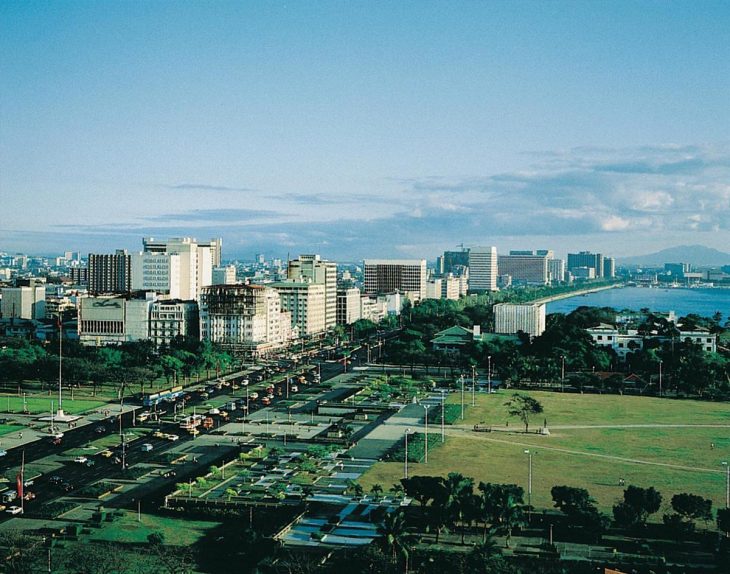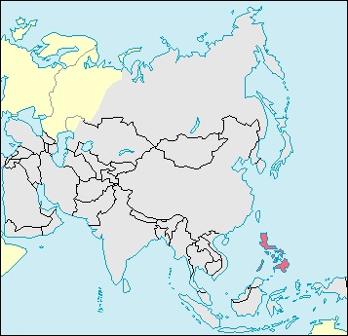What is the Capital of Philippines? Manila

Capital City of the Philippines: Manila
City Overview
Manila, the capital city of the Philippines, is located on the western side of the Luzon Island, facing the Manila Bay. It serves as the country’s political, economic, and cultural hub. With a population of over 1.8 million in its core city and around 13 million in the larger Metro Manila area, it is one of the most densely populated cities in the world. Despite its historical significance, Manila remains a dynamic metropolis with a mix of old colonial charm and modern urban life.
Founded in 1571 by the Spanish, Manila has witnessed significant historical events, including Spanish colonial rule, American occupation, and the fight for independence during World War II. Over the centuries, the city has transformed from a walled fortress into a bustling center of commerce, education, and government.
Manila’s role as the capital has made it the heart of the country’s political and economic landscape. With many of the Philippines’ most important institutions, such as Malacañang Palace (the official residence of the President), the National Museum, and the Manila Cathedral, it offers a blend of rich historical heritage alongside modern developments.
City Facts
- Area: 42.88 km² (16.54 square miles)
- Population: Over 1.8 million (2023 estimate), with the greater Metro Manila area hosting around 13 million.
- Time Zone: Philippine Time (PHT), UTC +8:00.
- Highest Mountain: Mount Apo, located in Mindanao, is the highest mountain in the Philippines, standing at 2,954 meters (9,692 feet). Though not in Manila itself, it holds significance for the country’s geography.
- Longest River: The Cagayan River is the longest in the Philippines, stretching for about 505 kilometers (314 miles), though it flows in the northern part of the Philippines, far from Manila.
Major Landmarks in Manila
Manila’s landmarks reflect both its historical importance and its modern identity. Some of the city’s most famous sites include:
- Intramuros: Known as the “Walled City,” Intramuros is the oldest district in Manila and was the seat of Spanish colonial power. The walls, forts, and old buildings within Intramuros, such as Fort Santiago and San Agustin Church, tell the story of Manila’s colonial past.
- Rizal Park (Luneta Park): One of the most important historical parks in the Philippines, Rizal Park commemorates the life of Dr. José Rizal, the national hero who was executed there in 1896. The Rizal Monument, located at the center of the park, is a significant symbol of Philippine independence.
- Manila Cathedral: A stunning example of Romanesque architecture, the Manila Cathedral is located in Intramuros and serves as the seat of the Archbishop of Manila. The church has been rebuilt multiple times after being destroyed by earthquakes and wars.
- National Museum Complex: Manila is home to several important museums, including the National Museum of Fine Arts, National Museum of Anthropology, and National Museum of Natural History. The museums house collections of Filipino art, cultural artifacts, and natural history.
- Cultural Center of the Philippines (CCP): The CCP Complex in Pasay, just outside the city proper, is home to theaters and performance spaces showcasing Filipino performing arts, ballet, music, and drama.
- Manila Ocean Park: A world-class oceanarium located along Manila Bay, Manila Ocean Park features marine life exhibits, interactive shows, and a glass tunnel that allows visitors to walk through tanks filled with marine animals.
- Baywalk: Running along Manila Bay, the Baywalk is a promenade offering a view of the sunset, popular for evening walks, local cafes, and street vendors. It remains one of the city’s most scenic spots.
- Divisoria: A bustling shopping district known for its variety of goods and affordable prices, Divisoria is a major commercial center in Manila that caters to both locals and tourists.
- Malls and Shopping Centers: Manila is home to world-class shopping malls like SM Mall of Asia (the largest mall in the Philippines), Greenbelt, and Glorietta, offering everything from luxury brands to local crafts.
- Manila Yacht Club: Located near Roxas Boulevard, the Manila Yacht Club is a private marina that serves as a venue for leisure boating and upscale dining, providing a beautiful view of the bay.
Climate Overview
Manila enjoys a tropical climate, with distinct wet and dry seasons. The wet season typically runs from June to November, while the dry season is from December to May. Despite its proximity to the coast, Manila experiences high humidity throughout the year, especially during the hotter months.
The city is prone to typhoons during the wet season, and heavy rainfall can lead to flooding in certain areas. The dry season brings more comfortable temperatures, although humidity levels can still remain high.
Climate Data for Manila
| Month | Avg Temperature (°C) | Precipitation (mm) | Sunny Days |
|---|---|---|---|
| January | 26 | 58 | 8 |
| February | 27 | 35 | 9 |
| March | 28 | 39 | 10 |
| April | 29 | 19 | 10 |
| May | 29 | 145 | 7 |
| June | 28 | 272 | 6 |
| July | 28 | 314 | 5 |
| August | 28 | 348 | 5 |
| September | 28 | 307 | 6 |
| October | 28 | 253 | 7 |
| November | 27 | 139 | 8 |
| December | 27 | 72 | 9 |
Other Cities as Capital in the History of the Philippines
- Cebu (1565–1589)
- Time Period: Cebu was the first capital of the Spanish Philippines, during the early stages of Spanish colonization. After the foundation of Manila, Cebu’s role as the capital was diminished but it remained an important center.
- Vigan (1589–1595)
- Time Period: The city of Vigan, now in the Ilocos Region, briefly served as the capital of the Spanish Philippines before Manila took over due to its strategic location for trade.
- Quezon City (1948–1976)
- Time Period: Quezon City, located just northeast of Manila, served as the capital of the Philippines from 1948 to 1976. It was created during the presidency of Manuel L. Quezon, and the capital was moved back to Manila in 1976.
Country Facts
- Country Name: Philippines
- Capital: Manila
- Population: Approximately 113 million (2023 estimate)
- Area: 300,000 km² (115,831 square miles)
- Largest City: Quezon City, part of the Metro Manila area
- Currency: Philippine Peso (PHP)
- Official Languages: Filipino (based on Tagalog), English
- ISO Country Codes: PH (Alpha-2), PHL (Alpha-3), 608 (Numeric)
- Government: Unitary presidential republic
- Religion: The Philippines is predominantly Roman Catholic (about 80%), followed by Protestants and a small Muslim population.
Manila stands as a vibrant metropolis with a rich history and a diverse culture. It is both a modern urban center and a historical city, with a blend of colonial architecture and contemporary developments. Whether you’re walking through the ancient streets of Intramuros, enjoying the view from Rizal Park, or indulging in world-class shopping, Manila offers a unique experience for both locals and tourists. The city’s dynamic fusion of history, culture, and modernity makes it the beating heart of the Philippines.














































